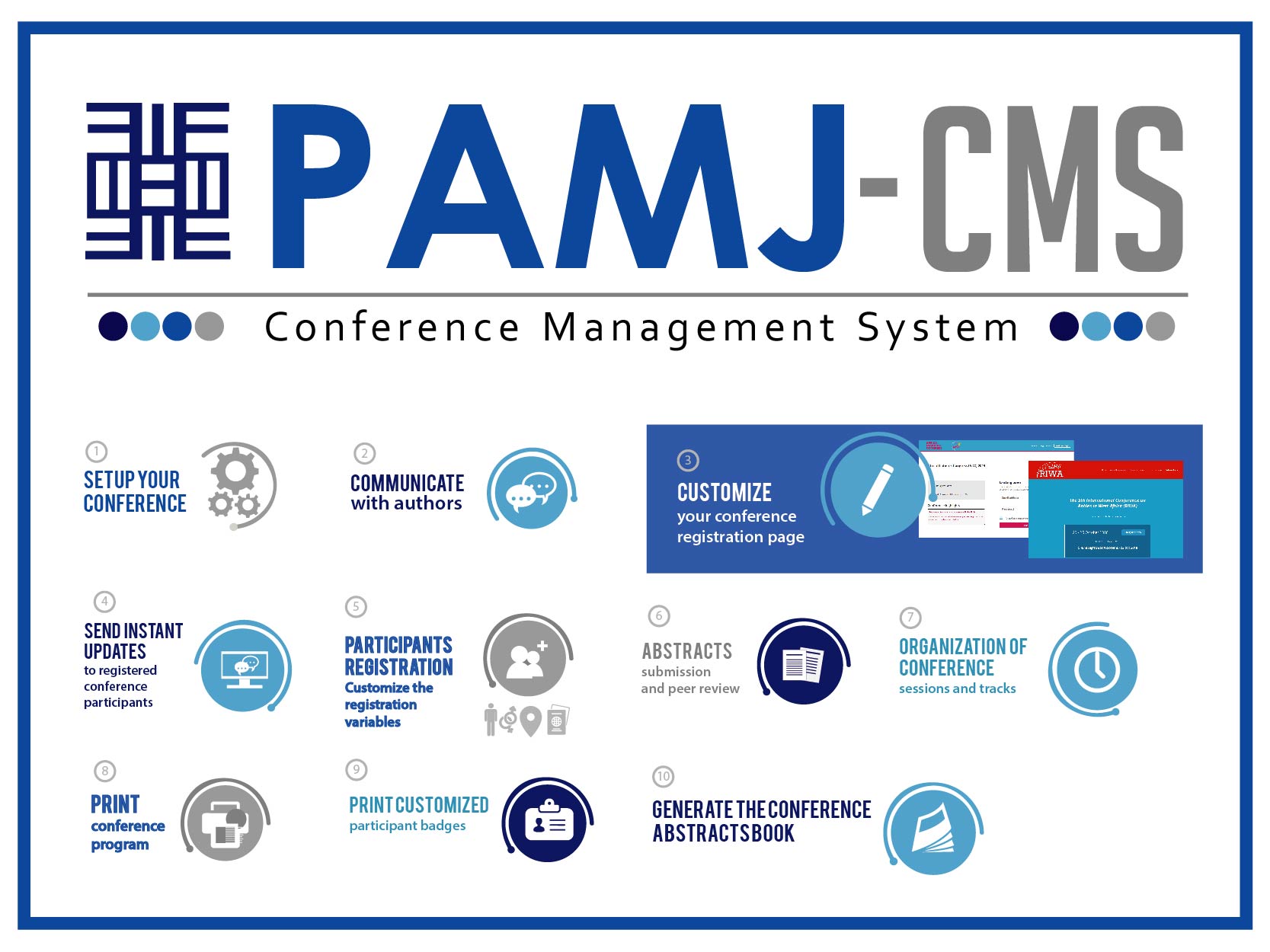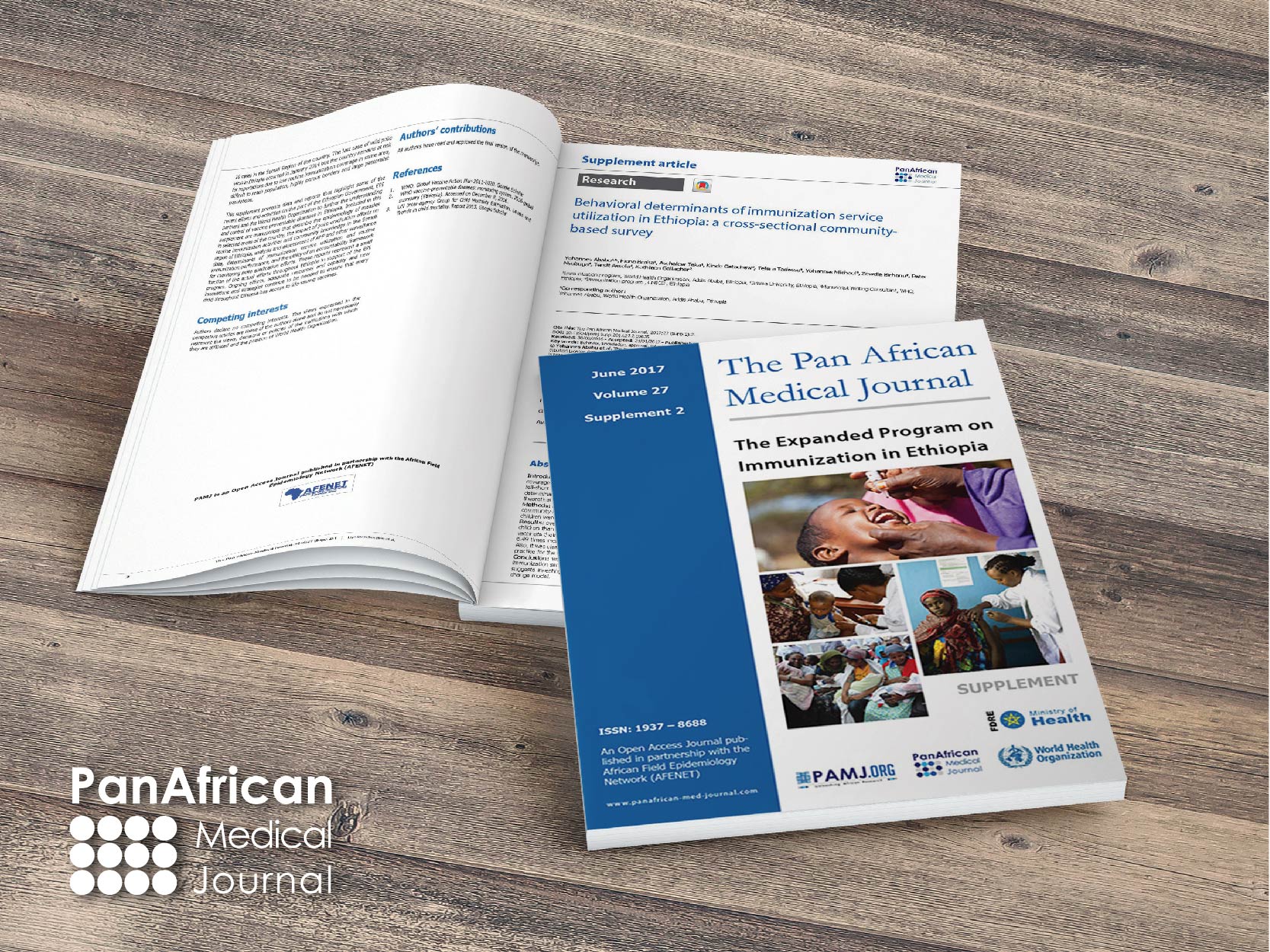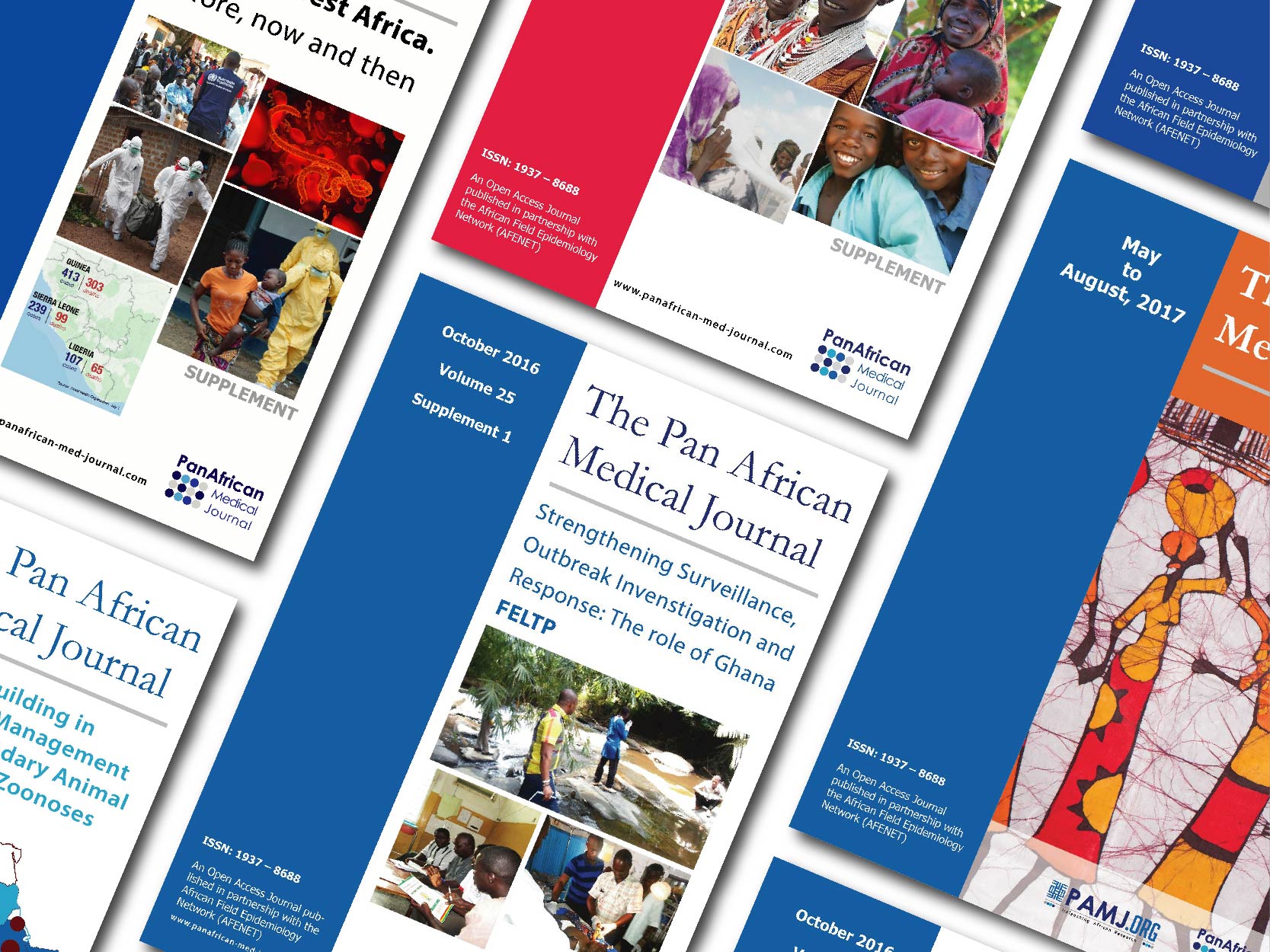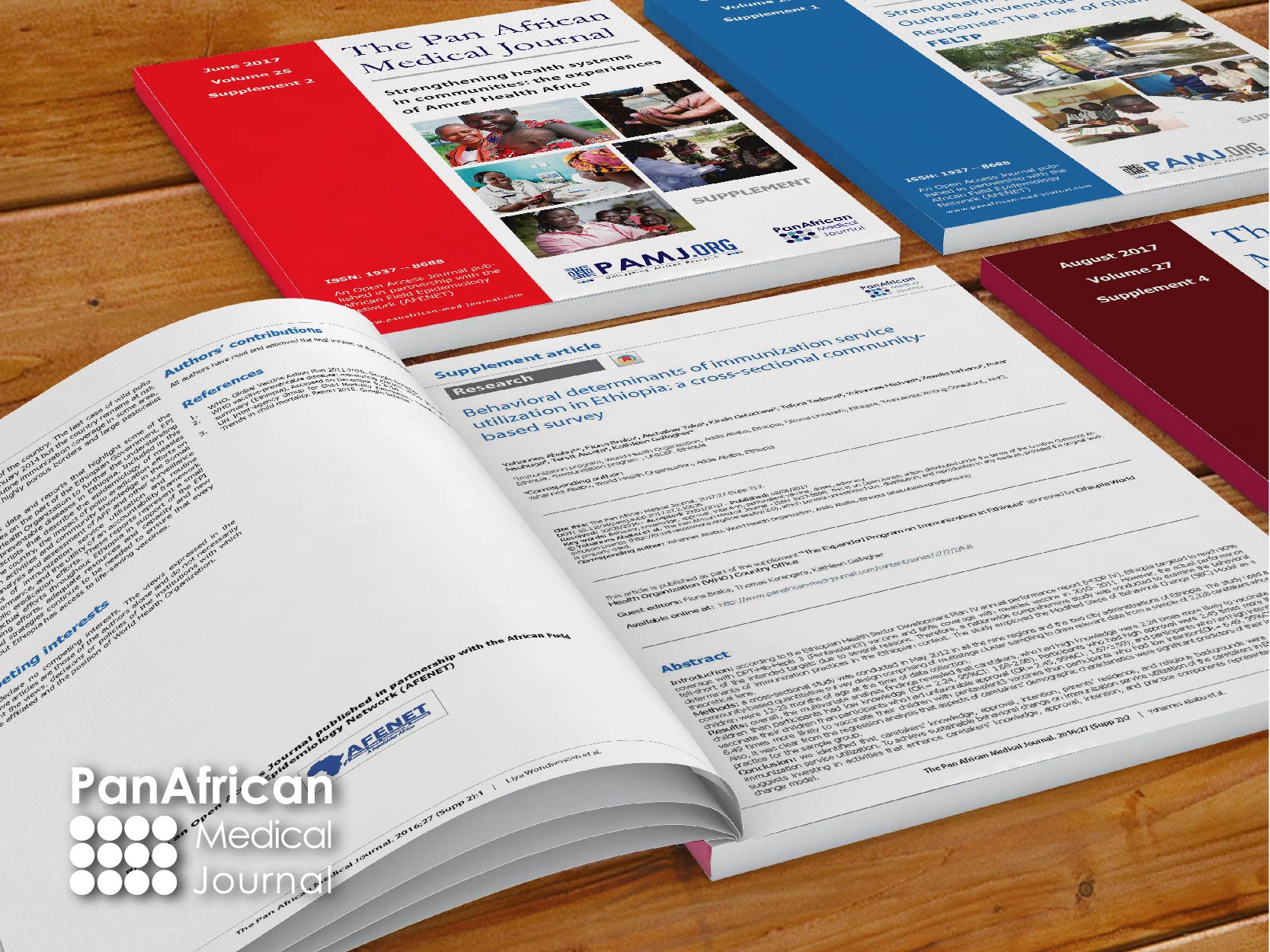Conference abstract
Prevalence of electrocardiographic abnormalities and dyslipidemia and glycemic disorders, in a strategy to prevent sudden death in students of UdM University Cameroon
Pan African Medical Journal - Conference Proceedings. 2024:22(75).25
Nov 2024.
doi: 10.11604/pamj-cp.2024.22.75.2543
Archived on: 25 Nov 2024
Contact the corresponding author
Keywords: Sudden death, electrocardiographic abnormalities, dyslipidemia, students-UdM
Poster
Prevalence of electrocardiographic abnormalities and dyslipidemia and glycemic disorders, in a strategy to prevent sudden death in students of UdM University Cameroon
Ngongang Ouankou Christian1,&, Fotso KL2, Tchuisseu DP2
1University of Dschang, Dschang, Cameroon, 2University of Mountain, Bangangte, Cameroon
&Corresponding author
Introduction: sudden cardiac death is an unexpected death due to a cardiac disease that arrives within the hour after the rise of premonitory symptoms. Death occurs due to cardiac arrest. With this in mind, we focused our study on the prevention of sudden cardiac death by screening abnormalities that are potentially predictive of it. Our research aimed to find out the prevalence of electrocardiographic abnormalities and dyslipidemia potentially predictive of sudden cardiac death among students of Université des Montagnes.
Methods: to do this we conducted a cross-sectional descriptive study on regularly registered students for the 2023/2024 academic year at UdM over a period of 7 months where the students benefited from an electrocardiogram and a lipid profile.
Result: of the 170 participants included the majority were female (67,7%) and the median age was 21 years. 77,1% were sedentary. Overweight and obese were represented at 6,5% and 0,6% respectively, 17,1% had blood pressure above the norm and 3,5% had blood sugar levels above 1,26g/L. The prevalence of electrocardiographic abnormalities was 55,9%, and sinus arrhythmia was the most represented with a prevalence of 31,2%. According to modified Corrado criteria, 27,6% had adaptive abnormalities and 2,9% had electrocardiographic abnormalities potentially predictive of sudden cardiac death with QTc abnormalities at the top. The most represented dyslipidemia is low HDLc at 39,4% followed by high LDLc at 3,5%. We found a prevalence of dyslipidemia potentially predictive of sudden cardiac death (LDLc/HDLC ratio≥4,22) at 8,8%. 92.3% of the participants having at least one electrocardiographic abnormality and/or dyslipidemia were exposed to at least one risk factor of sudden cardiac death. We found 89,4% of the participants with electrocardiographic abnormalities and/or dyslipidemia had at least 1 risk factor of sudden cardiac death.
Conclusion: we found a non-negligible prevalence of electrocardiographic abnormalities and dyslipidemia potentially predictive of sudden cardiac death and measures must be undertaken such as dietary hygiene measures and the follow-up of students at risk to minimize the probability of this event to occur.
Prevalence of electrocardiographic abnormalities and dyslipidemia and glycemic disorders, in a strategy to prevent sudden death in students of UdM University Cameroon
Ngongang Ouankou Christian1,&, Fotso KL2, Tchuisseu DP2
1University of Dschang, Dschang, Cameroon, 2University of Mountain, Bangangte, Cameroon
&Corresponding author
Introduction: sudden cardiac death is an unexpected death due to a cardiac disease that arrives within the hour after the rise of premonitory symptoms. Death occurs due to cardiac arrest. With this in mind, we focused our study on the prevention of sudden cardiac death by screening abnormalities that are potentially predictive of it. Our research aimed to find out the prevalence of electrocardiographic abnormalities and dyslipidemia potentially predictive of sudden cardiac death among students of Université des Montagnes.
Methods: to do this we conducted a cross-sectional descriptive study on regularly registered students for the 2023/2024 academic year at UdM over a period of 7 months where the students benefited from an electrocardiogram and a lipid profile.
Result: of the 170 participants included the majority were female (67,7%) and the median age was 21 years. 77,1% were sedentary. Overweight and obese were represented at 6,5% and 0,6% respectively, 17,1% had blood pressure above the norm and 3,5% had blood sugar levels above 1,26g/L. The prevalence of electrocardiographic abnormalities was 55,9%, and sinus arrhythmia was the most represented with a prevalence of 31,2%. According to modified Corrado criteria, 27,6% had adaptive abnormalities and 2,9% had electrocardiographic abnormalities potentially predictive of sudden cardiac death with QTc abnormalities at the top. The most represented dyslipidemia is low HDLc at 39,4% followed by high LDLc at 3,5%. We found a prevalence of dyslipidemia potentially predictive of sudden cardiac death (LDLc/HDLC ratio≥4,22) at 8,8%. 92.3% of the participants having at least one electrocardiographic abnormality and/or dyslipidemia were exposed to at least one risk factor of sudden cardiac death. We found 89,4% of the participants with electrocardiographic abnormalities and/or dyslipidemia had at least 1 risk factor of sudden cardiac death.
Conclusion: we found a non-negligible prevalence of electrocardiographic abnormalities and dyslipidemia potentially predictive of sudden cardiac death and measures must be undertaken such as dietary hygiene measures and the follow-up of students at risk to minimize the probability of this event to occur.








